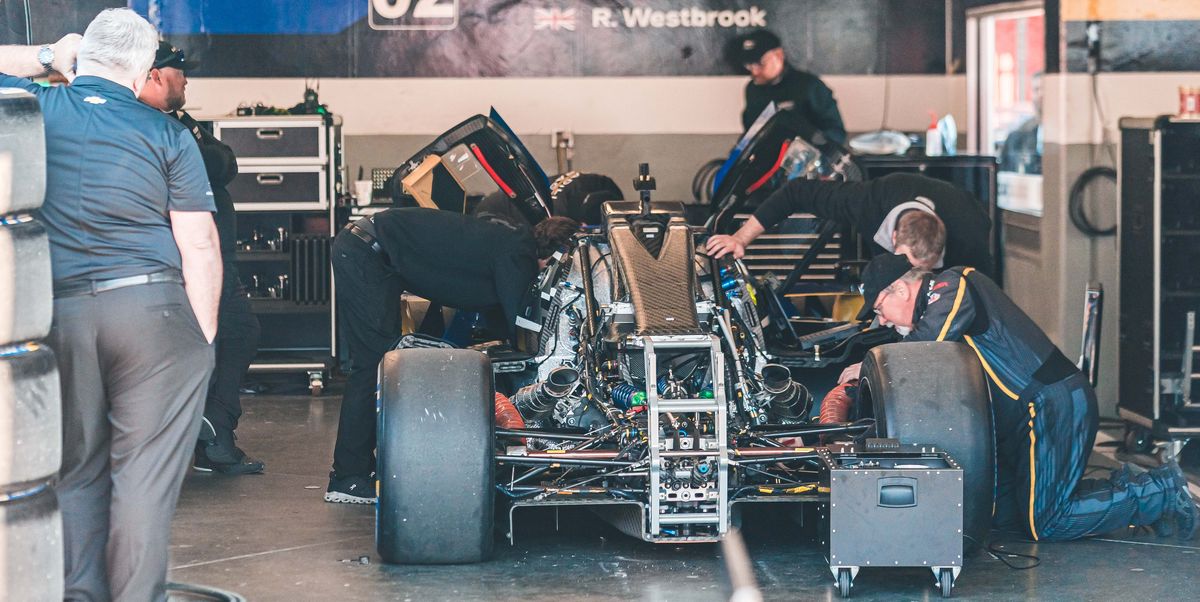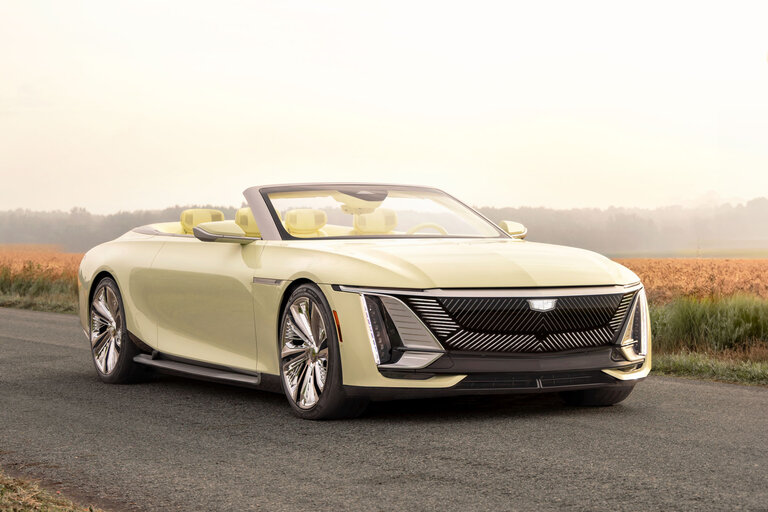
- Hybrid power came to IMSA’s top-class GTP prototype division this year, which changed the racing at the 2023 Rolex 24 at Daytona race dramatically.
- Four major automobile manufacturers chose to build and back hybrid GTPs, an undertaking that required large engineering staffs, huge amounts of computing power, and rigorous testing.
- The new rules that ushered in the hybrid era are as complicated as the cars themselves, combining both real and virtual energy usage. The changes challenged the teams from Cadillac, BMW, Porsche, and Acura to sort out myriad scenarios in defining their race strategies.
This year’s Rolex 24 at Daytona saw the debut of hybrid race cars in IMSA’s top GTP Prototype class. While hundreds of thousands of hybrid passenger cars have been humming along our roads for more than two decades, the new GTPs’ systems are as different from those on street cars as a hard-boiled egg is from an omelet.
We spent time at the race with Cadillac, one of the four major vehicle manufacturers—along with BMW, Porsche, and Acura—that brought hybrid GTP machines. We quizzed their engineers mercilessly in an attempt to learn how the complex powertrain systems work and how they’re used in the race. We appreciate that they spoke slowly and tried to use simple English when explaining their wild-looking cars to us.
Shared Hybrid Technology
Per the regulations set up by IMSA, the series’ sanctioning body, the manufacturers in GTP were mandated to use an identical hybrid system. Bosch supplied the motor-generator unit (MGU), which nestles between the engine and the seven-speed Xtrac rear transaxle. The MGU produced a peak of 40 horsepower at Daytona and will be enabled to deliver slightly more at longer tracks such as Le Mans.
The MGU feeds a tiny 1.35-kWh battery; the system operates at up to 800 volts. A GTP car’s total system output—gas engine plus electric motor—cannot exceed 500 kW (671 horsepower) at the rear wheels at any time in these rear-drive race cars. Torque sensors on the rear axles ensure that the teams keep to that power output. IMSA monitors the rear-wheel power via the same telemetry the teams use in the pits. The cars have an adjustable regen system that works on the rear axle to recharge the battery.
The design of the gasoline engines powering each GTP car is up to the manufacturer. Cadillac developed a 5.5-liter naturally aspirated 32-valve V-8; BMW used a 4.0-liter twin-turbo V-8; Porsche went with a twin-turbo 4.6-liter V-8; and Acura stuck a twin-turbo 2.4-liter V-6 in the tail of its two cars. Nine of the electro-monsters were on the grid, three from Cadillac and two each from the other manufacturers.
Shape-Shifting Hybrid Power
This is where things get weird-science freaky. When no electric power is being used, the gas engine can supply the full 671 horses. When the MGU is feeding power through the transmission, it cannot add to that total. If the electric motor is on full blast, adding its 40 horses, then the gas engine is automatically dialed down by that amount. This would theoretically enable the driver to save fuel and stretch a driving stint. A lot of the regen is accomplished while braking, but it can also be done on the straightaways; at Daytona the tiny battery can be depleted in a lap of the 3.56-mile road course and just about recharged in a lap.
If regen is being used while going down the straightaway and puts the equivalent of 40 horsepower of drag into the rear axle, the team can turn up the gas engine by 40 horsepower to offset that. Which means that the gas engines in the GTP cars can make more than 671 horsepower when needed.
Passenger-car manufacturers sometimes use hybrid systems to fatten up the low-rpm torque curve of their cars for better performance. We were told that a GTP’s electric motor has virtually no effect on the performance of the car, but we’re not so sure. Race teams don’t like to give away any technical advantages that they might have discovered during development.
Life in the Virtual Lane
As if this isn’t complicated enough, there’s an important virtual aspect to the new GTP class. IMSA has decreed that the GTP cars are allowed to use no more energy per driving stint than 920 megajoules, or 255.6 kWh. The calculation is made utilizing the torque sensors on the rear axle. IMSA monitors the total energy (the combination of gas-engine power and hybrid electricity) to ensure the teams don’t exceed the maximum amount during a stint. If they do, a time penalty is assessed, putting them that much further behind. The initial penalty is 100 seconds. No team wants to suffer that.
IMSA describes the GTP cars as having a “virtual fuel tank” that needs to be “virtually refilled” when the energy limit is reached. When the 920 megajoules of total energy are about depleted, the team brings the car in even if there’s gasoline remaining in the tank. When the gasoline fueling hose is attached to the car, the clock starts and the megajoule allotment is replenished at the rate of 23 megajoules per second for as long as the hose is in the car. The gas tank might refill in 15 seconds, but a full megajoule fill-up takes 40 seconds, so the car can be sitting still even with a full gas tank if the team deems it necessary to top up the megajoules. In situations where cars pit early during a caution period or for a flat tire, a shorter virtual fill-up will do. Generally, the pit stop schedule will revolve around energy usage rather than purely gasoline consumption as the cars will sometimes have enough gas to keep circulating beyond when the megajoule limit is reached. Woof!
Strategic Overload
All this created so many strategy possibilities—for how and when the hybrid electrical power was deployed and how to play the megajoule game—that the car companies’ computers were smoking from overwork. And what would some of those strategies be? The Cadillac engineers weren’t talking, nor did other GTP teams go public with their thinking before the event. This is racing, and any advantage a team thinks it has it protects with a wall of silence. The Caddy people did admit that the new cars are so much more complex now, and that the possible race scenarios are so great in number, they had to quadruple the number of software engineers on the team compared to when they ran IMSA’s top DPi prototype class last year.
Cadillac driver Alex Sims said the drivers control only the regen level directly from the cockpit. Their job is to drive flat out and not crash. How and when the hybrid’s juice is deployed is a team secret; it’s switched on automatically depending upon which powertrain setting is chosen by the driver at the direction of the team’s engineers.
We think we’ve got all of that right. But we know that the teams did, because the top four GTP finishers were on the same lap and within a handful of seconds of one another after 24 hours. The winning Acura ARX-06’s quickest race lap was about three-tenths of a second quicker than its second-place sister car’s. And that car’s best lap was only one-thousandth of a second quicker than the third-place Caddy V-LMDh’s.
It was a great race right to the very end. And best of all, you didn’t have to know anything about megajoules to enjoy it.
#Deep #Dive #Technology
Source link






